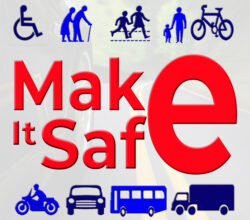Advice on the safe wearing of seat belts during pregnancy.
Pregnancy does not automatically exempt you from wearing a seat belt. You are excused from using a seat belt during pregnancy only if granted by a doctor for medical reasons.
Ensuring a Safe Travel Experience for Pregnant Women as Passengers
Pregnant women require special attention and care when travelling as passengers in vehicles to ensure their safety and the well-being of their unborn children. Whether it’s a short trip to the grocery store or a long-distance journey, following these guidelines can help pregnant women have a safer travel experience:
1. Consult with Your Healthcare Provider: Before travelling, consult with your healthcare provider to ensure that you are medically fit for the trip. Discuss any concerns or specific precautions you should take based on your stage of pregnancy and overall health.
2. Buckle Up Properly: Always wear your seatbelt properly when travelling in a vehicle. Position the lap belt low across your hips, below your belly, and across your upper thighs. The shoulder belt should cross your chest, between your breasts, and away from your neck. Ensure that the seatbelt is snug and secure.
3. Sit in a Comfortable Position: Adjust your seat to a comfortable position that provides proper support for your back and reduces strain on your abdomen. Sit upright with your seat slightly reclined if needed, maintaining a safe distance from the steering wheel and dashboard.
4. Utilize Seat Belt Adjusters: Consider using seat belt adjusters designed specifically for pregnant women. These devices help position the seatbelt correctly and improve comfort by reducing pressure on the abdomen.
5. Take Frequent Breaks: During long journeys, take regular breaks to stretch your legs, use the restroom, and relieve any discomfort. Prolonged periods of sitting can lead to swelling and discomfort, so it’s important to get up, move around, and promote healthy blood circulation.
6. Stay Hydrated and Snack Smart: Carry plenty of water and healthy snacks to stay hydrated and maintain your energy levels during the journey. Snack on nutritious options like fruits, nuts, and granola bars to keep your blood sugar levels stable.
7. Avoid Risky Driving Behaviors: Encourage the driver to practice safe and cautious driving habits. Avoid aggressive manoeuvres, speeding, and sudden braking, as these actions can cause discomfort and increase the risk of injury.
8. Use Pillows for Support: Use pillows or cushions to provide additional support for your back, hips, and neck. Proper support can help alleviate discomfort and reduce the strain on your body during the journey.
9. Communicate with the Driver: If you experience any discomfort, pain, or signs of fatigue during the trip, communicate with the driver and request a break or a stop at the nearest safe location. It’s essential to listen to your body’s signals and prioritize your well-being.
10. Pack Essentials: Carry essentials such as prenatal vitamins, any necessary medications, your healthcare provider’s contact information, and your medical records, especially if travelling long distances or away from home.
11. Consider the Airbags: If you’re sitting in the front passenger seat, be mindful of the airbags. Maintain a safe distance from the airbag compartment and follow the vehicle manufacturer’s recommendations regarding airbag use during pregnancy.
12. Plan for Emergencies: Familiarize yourself with emergency contact numbers, nearby hospitals or medical facilities along your route, and the procedures to follow in case of a medical emergency.
Remember, each pregnancy is unique, and it’s essential to consult with your healthcare provider regarding any specific concerns or restrictions related to travelling as a passenger. Prioritize your comfort, safety, and well-being during the journey to ensure a positive travel experience for you and your unborn child.
![]()
